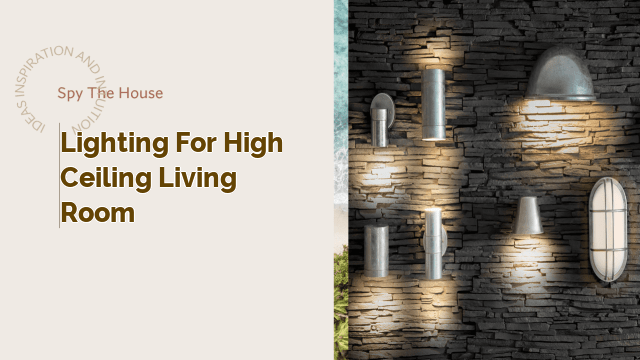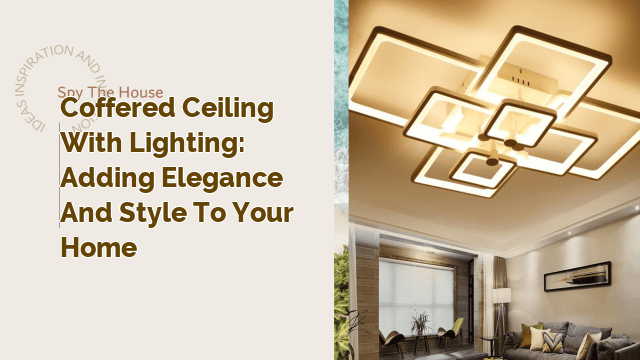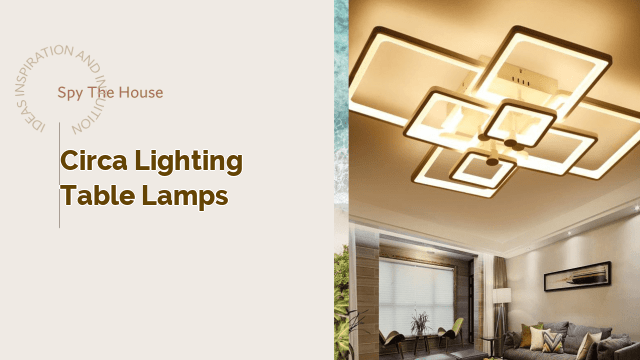Lighting for High Ceiling Living Room
Lighting is an important aspect of interior design that can transform the look and feel of any living space. When it comes to lighting for high ceiling living rooms, there are a few key things to consider. In this article, we will discuss the different types of lighting that are suitable for high ceiling living rooms, how to choose the right fixtures, and some tips for creating a cohesive and functional lighting plan.
Explaining Lighting for High Ceiling Living Room
High ceiling living rooms are a popular feature in modern homes, as they provide an open and spacious feel to the living space. However, the height of the ceiling can make it challenging to create a comfortable and well-lit environment. The key to achieving a well-lit high ceiling living room is to balance both function and aesthetics.There are three main types of lighting that are suitable for high ceiling living rooms: ambient lighting, task lighting, and accent lighting. Ambient lighting is the primary source of light in the room and is used to create a general and even illumination throughout the space. Task lighting is used to provide focused and directional light for specific activities, such as reading or working. Accent lighting is used to highlight architectural features or decorative elements in the room.
Choosing the Right Fixtures
When it comes to choosing the right fixtures for a high ceiling living room, there are a few key things to consider. First, the size and scale of the fixtures should be proportionate to the size of the room. Oversized fixtures can overwhelm the space, while undersized fixtures can look out of place.Second, the placement of the fixtures is important for creating a balanced and functional lighting plan. In general, ambient lighting fixtures should be placed in the center of the room or along the ceiling to provide even illumination. Task lighting fixtures should be placed where they are needed, such as above a reading nook or a workspace. Accent lighting fixtures can be used to highlight architectural features or decorative elements, such as a fireplace or a piece of artwork.Finally, the type of bulb used in the fixtures is also important for achieving the right level of illumination. LED bulbs are a popular choice for high ceiling living rooms, as they provide a bright and energy-efficient light source. Dimmer switches can also be used to adjust the level of illumination and create a more customizable lighting plan.
Creating a Cohesive and Functional Lighting Plan
To create a cohesive and functional lighting plan for a high ceiling living room, it is important to consider the overall design and style of the space. The lighting fixtures should complement the existing decor and enhance the overall ambiance of the room.The placement of the fixtures should also take into account the different activities that take place in the living room. For example, task lighting fixtures should be placed near seating areas where reading or working takes place. Accent lighting fixtures can be used to highlight decorative elements or architectural features in the room.It is also important to consider the natural light sources in the room and how they can be used to supplement the artificial lighting. Large windows or skylights can provide a source of natural light during the day, while sheer window treatments can diffuse the light and create a softer ambiance.
Tips for Creating a Cozy Atmosphere
In addition to providing functional lighting, high ceiling living rooms can also benefit from lighting that creates a cozy and welcoming atmosphere. Here are a few tips for achieving a cozy ambiance:- Use warm-toned bulbs to create a soft and inviting glow.- Incorporate dimmer switches to adjust the level of illumination for different activities and moods.- Use table lamps or floor lamps to create intimate pools of light.- Layer different types of lighting for a more dynamic and visually interesting space.- Use candles or string lights to create a warm and inviting ambiance.
People Also Ask and Answers
Q: What is the best type of lighting for high ceiling living rooms?A: The best type of lighting for high ceiling living rooms is a combination of ambient, task, and accent lighting.Q: How do you choose the right fixture size for a high ceiling living room?A: The fixture size should be proportionate to the size of the room. Oversized fixtures can overwhelm the space, while undersized fixtures can look out of place.Q: Can natural light be used in conjunction with artificial lighting in high ceiling living rooms?A: Yes, natural light can supplement the artificial lighting in high ceiling living rooms and create a more dynamic and inviting space.In conclusion, lighting for high ceiling living rooms is all about achieving a balance between function and aesthetics. By choosing the right fixtures, bulbs, and placement, you can create a cohesive and functional lighting plan that enhances the overall ambiance of the space. Don’t be afraid to experiment with different types of lighting and layering techniques to create a more dynamic and visually interesting living room.






